Dive into the fascinating world of business with our collection of free business books!
Here you will find a wide selection of titles that will help you expand your knowledge, improve your skills, and achieve success in the business world.
Our business book catalog covers a wide range of topics, from marketing and finance to leadership and entrepreneurship. Each of these books has been selected to offer you valuable information and practical strategies that you can apply in your professional life.
We understand that time is a valuable resource for professionals and entrepreneurs. That’s why we strive to make the search and download of business books quick and efficient.
In addition to offering free business books, we also take pride in keeping our content up to date. Our team constantly works to add new titles and maintain a fresh and relevant catalog.
Explore our collection of business books right now and take your career or business to the next level.
1) Accounting Books

Accounting is the part of finance that studies the different items that reflect the economic and financial movements of a company or entity.
It is a key tool to know in which situation and conditions a company is and, with this documentation, to be able to establish the necessary strategies in order to improve its economic performance. For example, if we buy wood to manufacture chairs we will have to account for that purchase to know how much we have, how much it has cost, who the seller is, when we bought it, etc. All this and more is accounted for.
Accounting is a resource that is available to manage a company’s expenses and income. Any company in the development of its activity carries out operations of purchase, sale, financing as a result of these activities its patrimony varies and it obtains a benefit or a loss.
2) Advertising Books
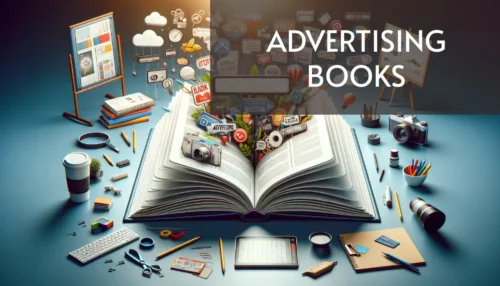
Many people confuse marketing with advertising, but they are not synonymous. Advertising is one of the resources of marketing. Marketing uses a process of studying the target audience, focusing on strategies to address it, and advertising is the last phase, which allows to promote the product and create a persuasive message.
Although it may not seem like it, advertising is quite old. As long as there has been any kind of commerce, it has been present in one form or another. As far back as Babylon, 3000 years before Christ, a message to the traders of the time was evidenced on a papyrus.
David Ogilvy launched the concept of brand image and was the promoter of the “creative revolution”, where brands and products were the center of attention.
3) Agribusiness Management Books

It is responsible for planning and managing agricultural, livestock, livestock, forestry, and environmental projects. It has to do directly with the organization and control of the production of natural resources, ensuring that their benefits are profitable and profitable.
Furthermore, it is essential for the manager to know the natural and economic resources used in rural production, the marketing process, and its industrial transformation to evaluate the costs and solvency of the production processes.
The work in agribusiness management is directly in the field, always supervising the conditions of goods, services, and finances. Therefore, administrative and technological techniques are fundamental.
4) Audit Books

Audits are very necessary for any company or organization, since they can improve processes and give a better image, both social, legal and fiscal, before the competent bodies.
The work of an auditor can only benefit the company, since it lets it know where it stands and whether or not it is doing its accounting, finance and administration correctly.
The auditor is the person in charge of carrying out the auditing process. Generally, they are a professional expert in the areas they evaluate, such as accounting and administration. They are analytical and objective in their conclusions.
5) Books about Benchmarking

Benchmarking is a process of research, development, and improvement of a specific business plan, processes, services, products, functions, and business practices within an institution, organization, or company.
Its purpose is to provide data of interest for decision-making, allowing companies to identify success stories and thus be in a position to improve their strategies. It is important to note that benchmarking does not imply copying, but is based on learning.
Benchmarking is a continuous activity because the market is constantly changing and it is important to know how a company is responding to it, and how the leading corporations in its market are responding to it.
6) Books about Corporate Image
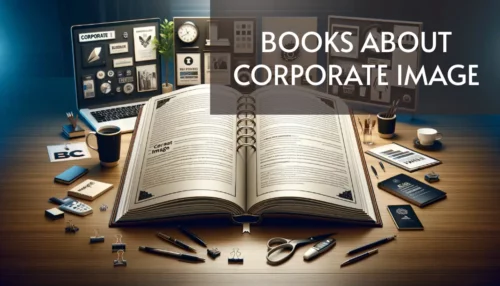
The corporate image is the image that people have of a particular company, it is a global concept that they have about its activities and products. It is composed of different elements associated with perception.
It is especially linked to the quality standard, values to be defended once they are proposed, commitments assumed with consumers or the community in general, among others. The creation of the corporate image is generally in charge of those responsible for the Public Relations area.
Nowadays, the Internet is an important communication channel where consumers have easy access to multiple options. In this context, having a corporate image is essential for brands to have the option to make their place in the market.
7) Books about Efficiency

Efficiency in management refers to the correct use of the least amount of resources to achieve an objective or when more goals are performed with the same or fewer resources.
As far as economics is concerned, efficiency implies making the best possible use of society’s resources, satisfying with the results the desires and needs of individuals.
Through process indicators, we can measure its efficient execution. These are generally focused on the methodology of how each of the tasks that make up the process is carried out. Some of the most common indicators are profitability, effectiveness, and customer satisfaction…
8) Books about Organizational Climate
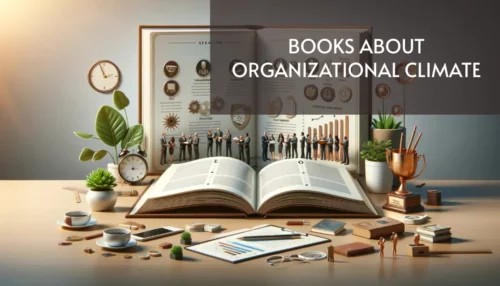
Organizational climate is all those labor and personal relationships that develop in any workplace. Depending on the organizational climate of an institution or company, its performance, achievement of objectives, and quality of goods or services can be evaluated and measured.
Organizational climate is a topic of great importance nowadays for almost all organizations. This is given that they are looking for a continuous improvement of the environment of their organization, to achieve an increase in productivity, without losing sight of the human resource.
Although a company’s environment can be perceived (sometimes overtly), it is challenging to measure it. This concept is influenced by intangible issues such as motivation or interpersonal relationships, so there are no signals that can be clearly measured. Despite this, the most commonly used measurement tool is the survey.
9) Books About Procedure Manuals
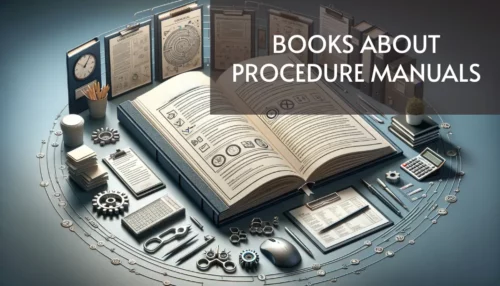
A procedure manual is a document that provides information regarding the different operations performed by an organization, company or a specific department. It is prepared by the same institution or organization where it is used and presents its information in a detailed, orderly, systematized and understandable way.
The procedure manuals are an indispensable tool for the implementation of the internal control system. It should include all the activities to be carried out and establish the responsibilities of the officers involved for the fulfillment of the organizational objectives.
The procedure manuals give the work performed a formal character for a given task. It is, in short, an orienting guide in the achievement of a result.
10) Books about SWOT

SWOT is an acronym for the words strengths, weaknesses, opportunities and threats, and identifies an analysis matrix that allows diagnosing the strategic situation in which a company, organization, institution or person finds itself.
With this analysis, it is possible to draw up a strategy with steps to follow according to the information obtained from its internal characteristics and the context. To carry out this type of process, you must first carry out an internal analysis and an external analysis of the institution in question.
When its parts are analyzed together, the SWOT framework can provide a more general overview of where you are and how to take the next step.
11) Books about Teamwork
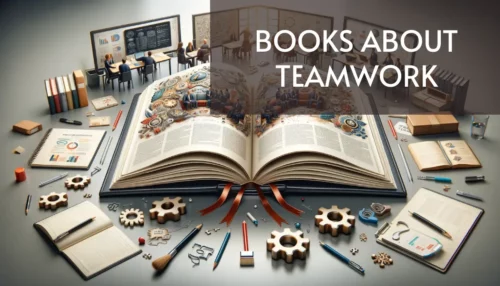
Teamwork is the integrated effort of a group of people to carry out a project. The term teamwork emerged after the First World War. Today, it is an efficient way of working that provides several points of view and resolves conflicts arising in the economic, political, and social spheres more efficiently.
On the other hand, teamwork generally requires a set of standard rules or, at least, a behavioral agreement to reduce the frictions and tensions inherent to coexistence and the confrontation of different points of view.
Teamwork is fundamental in many areas of life, and it helps to combine individual talents. A team functions satisfactorily when its members work in the same direction, when they are capable and when they respect the guidelines that have been established.
12) Books on Inflation

Inflation is the sustained rise in prices that has negative effects on a country’s economy. The higher the inflation, the fewer goods, and services we can consume with the same amount of money. For the citizen’s pocket, it means the loss of purchasing power.
In most countries, inflation is measured using the Consumer Price Index (CPI) as a reference. This is an indicator that values the price of a set of goods and services representative of the basket consumed by the population of a country, calculated on a weighted basis.
To solve an inflationary economy, economic and political measures are necessary. Among other measures, it is usually recommended to avoid an excess of money in circulation and to contain the increase in the cost of production.
13) Branding Books

Branding can be defined as the process of building a brand. In this sense, the brand can be considered as a “living being”. It seeks to give importance and show all the qualities that the brand itself has so that the client can know the values and the vision that the brand has and that serves to differentiate it from others.
Branding works with the concept that a brand must be planned, structured, managed and promoted. All these processes, which involve brand management, are part of this definition. Its objective is to make all stakeholders understand the positioning of the company, increase its relevance in the market, improve its visibility and make the company have a good reputation among its public.
Branding has become a necessary element for any company, as it is a way to consolidate the brand and achieve prestige and recognition, especially in digital communication platforms.
14) Budgeting Books

A budget refers to the amount of money needed to meet a certain number of expenses necessary to undertake a project. As such, it can be defined as an anticipated figure that estimates the cost of achieving the objective.
Budgets can be classified in different ways according to criteria such as the length of time they cover, they can be short term or long term planning; the latter are used by large companies and by states. On the other hand, they can be flexible or fixed; these do not allow modifications to be made despite changes that may occur in reality.
Once a budget has been made and executed, it is advisable to carry out an exhaustive follow-up as time goes by and the real data of what was budgeted are known.
15) Business Administration Books
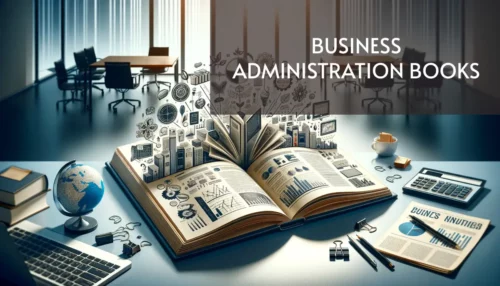
Business Administration is classified as a social, economic and technical science whose primary objective is to achieve the maximum possible benefit for an organization according to the defined objectives; through planning, organization, management and control of available resources (human, financial, technological, material, etc.).
The professional of the Business Administration must be an individual with vision, capable of putting into practice and developing all its notions about the planning, organization, direction and control of companies, to achieve the goals and purposes defined by the entity.
Likewise, as an administrator you must possess the decision-making capacity to effectively guide the company, and to effectively use the resources you have at your disposal. All this with the sole purpose of achieving the main objectives such as the generation of economic and social value, innovation, and competitiveness.
16) Business Plan Books

The business plan is a document that describes, in general terms, a business and the set of strategies that will be implemented for its success. In this sense, the business plan presents an analysis of the market and establishes the action plan that will be followed to achieve the set of objectives that have been proposed.
It is written before making an investment or starting a deal and must be clear, attractive, concise and realistic. It is common for entrepreneurs to draw up a business plan to set their future course of action.
A business plan should be a document to be used throughout the life of the company. It is a recurring and iterative process, so the business plan can be a good tool even to get back on track in times of crisis.
17) Business Strategy Books
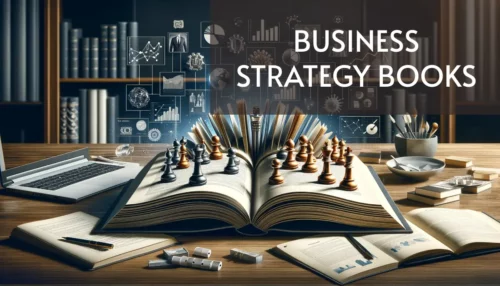
The strategic management is the way in which an organization defines how it will create value. It is about what to do and how to do it. It defines the objectives of the company and the actions and resources to be employed to meet those objectives.
The proposed strategy may be the best bet of the company’s management, but nothing fully guarantees its success, since organizations and their environment are in constant motion. This does not mean that a long-term strategy should not be drawn up. It does, but does not mean simply looking at the horizon. You must move forward by stepping on the ground and seeing what is happening in the immediate environment.
A business strategy is a methodology that seeks to achieve an objective through an action plan that is broken down into strategic objectives for each functional area of the company. For this, along with establishing the strategic objectives, it is necessary to estimate time frames for action, monitoring indicators, goals and those responsible.
18) Consulting Books

A consultancy is an organization, a service company, made up of professionals specially trained in a certain area and dedicated to advising on technical issues to companies operating in various fields.
Consultancy is usually carried out in different stages. These phases may include the development of a diagnosis, the examination of the problems detected, the development of an action plan, the implementation of proposals, the evaluation of the measures and the presentation of a closing report.
The objective of any consultancy is to provide practical knowledge to the companies or professionals that request it so that they acquire sufficient knowledge to solve their problems.
19) Continuous Improvement Books
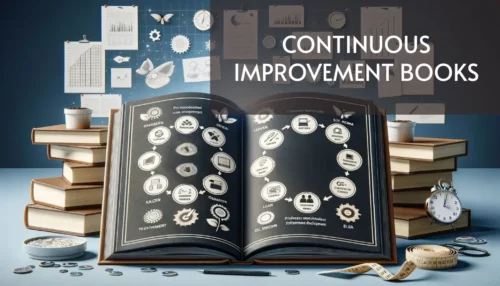
Continuous improvement is an approach to operational process improvement that is based on the need to continually review operations for problems, opportunity cost reduction, streamlining, and other factors that together enable optimization.
It means looking for opportunities to improve processes in the organization, setting objectives to optimize them, the way you work and taking advantage of audits and audit findings to detect issues or questions where you can improve what you do and how you do it in your business.
There are several methodologies associated with Continuous Improvement; among them are Lean Manufacturing, Six Sigma, Kaizen, among others, but we can say that the cornerstone of Continuous Improvement in any area of processes, products and/or services, is the so-called Deming Circle.
20) Costs Books

Cost is the economic outlay made for the production of a good or the provision of a service. It includes the purchase of inputs, payment of labor, production and administrative expenses, among other activities.
This term is often confused with expenses, with the difference being that costs are considered investments that are directly identified with revenues, while expenses are not associated with the return on the sale of the product or service.
Costs can be classified according to several criteria:
According to their behavior:
- Fixed costs
- Variable costs
- Semi-variable costs
According to the relationship between production factors and products:
- Indirect costs
- Direct costs
21) Cryptocurrency Books

Cryptocurrency is a type of digital currency that uses cryptography to provide a secure payment system. These encryption techniques serve to regulate the generation of monetary units and verify the transfer of funds. They do not need a central bank or other institution to control them.
Cryptocurrencies do not materialize on paper or credit cards. In this case, the money is in virtual wallets protected by a chain of blocks, or database, which is called Blockchain. In these wallets, also called wallets, all the operations carried out by anyone who has a cryptocurrency are recorded.
After Nakamoto created Bitcoin in 2008, dozens of decentralized cryptocurrencies have been launched. Today there are approximately 1700 and the number does not stop increasing: Ethereum, Solana, Polygon, Litecoin, Ripple, Dash…
22) Digital Marketing Books
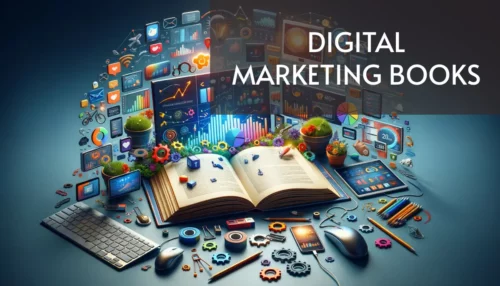
Digital marketing is the application of marketing strategies carried out in digital media. All the techniques of the off-line world are imitated and translated into a new world, the online world. In the digital world new tools appear such as immediacy, the new networks that arise every day, and the possibility of real measurements of each of the strategies used.
Parallel to the tremendous development and evolution of digital technology, digital marketing has been experiencing, progressively and very quickly, profound changes both in the techniques and tools used (and in their complexity) and in the possibilities offered to the receivers.
That’s why a digital strategy must include all relevant spaces where the target interacts, seeking to influence opinions and opinion makers, improving the positioning in search engines, and analyzing the information that these media provide to optimize the performance of the actions taken.
23) Dropshipping Books

Dropshipping is a method of shipping and delivering retail orders in which it is not necessary for the store to have the products it sells in stock. Instead, when the store sells a product, it buys it from a third party and has it shipped directly to the customer. As a result, the merchant never sees or handles the product.
The major difference between dropshipping and the traditional sales model is that the merchant who sells does not have an inventory. Instead, the merchant buys inventory from a third party as orders need to be fulfilled. This third party is usually a wholesaler or even the manufacturer of the product itself.
As to whether or not this method of selling is worthwhile, just to say that while it has very clear advantages, it also comes with a number of complexities and problems that require careful planning to make the business prosper.
24) Economics Books

Economics is understood as the science of social character in charge of studying the way to administer the available resources to satisfy the needs of the people. It also studies the behavior of individuals.
In general terms, Economy refers to the organization of the use of limited or finite resources, when they are used to meet the needs of individuals or a community.
Since the resources available to our planet are scarce, not everything can be disposed of, so we find ourselves in the need to manage those goods to obtain what we are lacking. The economy encompasses the decision making of individuals, organizations and countries to allocate those limited resources.
25) Entrepreneur Books

Entrepreneurship is much more than opening a business or launching a project. Entrepreneurship is launching yourself, making ideas happen, betting, getting excited, fearing failure, growing, advancing, not standing still, falling, getting up, having uncertainty, wishing the days had 35 hours, tasting the achievements and coping with the difficulties.
It all starts when you identify an unmet need and come up with an ingenious idea to transform a product or provide a service. If that idea can be marketed, we identify who we can sell it to and how to get revenue from it, then we have a potential business.
Entrepreneurship is a long and complicated road, which brings wonderful experiences, but also very difficult situations to face. You need to be willing to work without a break to make your dreams come true, to sacrifice essential parts of your daily life for it and to keep on insisting no matter what.
26) Finances Books

Finance corresponds to an area of the economy that studies the obtaining and management of money and capital, that is, financial resources. It studies both the obtaining of these resources (financing), as well as the investment and saving of them.
The study of finance has developed tools (such as basic concepts and quantitative models) that can be applied at all levels of decision-making: from renting a car or starting a business, to the decision of the CFO of a company. Big company
Finance can be divided into four large groups: Corporate Finance, Personal Finance, Public Finance, and International Finance.
27) Financial Accounting Books
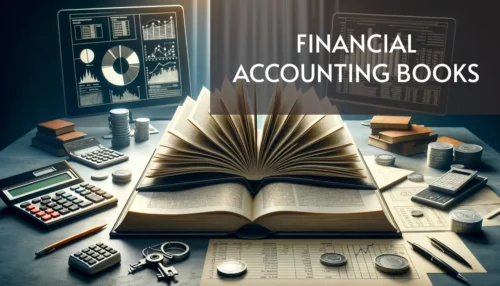
Financial accounting is responsible for recording the economic history of an organization and, together with cost accounting and management accounting, forms the accounting structure of the organization. Since the consumers of this information are usually external to the organization, it is also known as external accounting.
Financial accounting collects, records, classifies, summarizes and reports the quantifiable cash transactions of an economic entity. Its method is based on the conventional duality that must exist between the company’s equity and its corresponding financing, known as double entry.
There are basically four financial reports: the statement of cash flows, the statement of changes in equity, the profit and loss account and the balance sheet. These reports enable management to make decisions and report data required by shareholders or government agencies.
28) Financial Management Books

We know as Financial Management to that administration in charge of planning, directing, organizing and controlling the financial resources of a company or enterprise.
This type of administration is required by large, medium and small organizations, because it is essential for the proper performance and development of the company. It is of vital importance that you have solid knowledge regarding the administration of your financial resources, at the end of the day the correct management of your finances can be the difference between success and failure.
Among the main functions of the Financial Management we can mention
- Decide on the company’s investments.
- Be responsible for the type of financing the company uses.
- To seek and find sources of funding for the organization.
- Analyze the new possibilities for the company in terms of progress, as well as the respective budget.
- Carefully analyze the risk in each financial action of the organization.
29) Forex Books

Forex, also known as foreign exchange, FX or currency trading, is a decentralized global market of all the world’s traded currencies. This market is the largest and most liquid in the world. Thanks to this volatility, investors can have greater opportunities to maximize profits. However, this also implies greater risk.
Today, these are the times of online marketplaces. Therefore, buying and selling the currency of a particular country against the relative currency of another country is done over the Internet. Traders open a specific currency position and wait for a strengthening of the desired currencies if the objective is to buy or a weakening if the objective is to sell.
The purpose of switching from one currency to another is to hold the trade until there is a rise in value, then switch back and make a profit. The Forex market is all about making profits through currency pairs such as EUR/USD.
30) Gastronomic Management Books

Gastronomy is the science in charge of the relationship between culture and food. The relationship between gastronomy and management occurs when the gastronome must find a way to plan, organize, control, and direct his or her kitchen and the food that he or she will provide.
On the other hand, gastronomic administration is responsible for supervising the production processes of factories and industries engaged in the large-scale production of food and related products. It uses appropriate methods to manage inputs and which organoleptic, nutritional, and vitamin values are ideal for each group of products, among other things.
The restaurant sector has been growing in importance, to the point that some even call it the restaurant industry. In addition, every day the customer becomes more demanding, and more expert, which leads to the existence of more businesses that act as competition between them and this is where the importance of having good management lies.
31) Hospitality Industry Books

The history of the hospitality industry dates back to ancient times (1000 to 500 B.C.), when merchants traveled from one place to another to exchange goods for lodging. The hospitality industry encompasses all those establishments dedicated to providing lodging and food services to permanent or transient guests.
Hospitality industry is not only concerned with the management of a hotel, but with the management of various aspects of different tourism-related services. This may include gastronomy, the organization of events or the accommodation itself. There are also different types of places where these services are provided.
Customer service is a very important aspect of the hospitality industry, the customer of a hotel must be considered by all staff in a friendly and respectful manner. The main occupations in the hospitality industry are: management and administration, reception, concierge, floors, laundry, cleaning, kitchen and dining room.
32) Human Resources Books
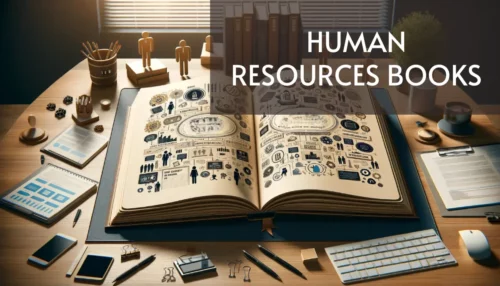
In an organization, Human Resources refers to the function or department belonging to the management and administration of companies, which is responsible for organizing and maximizing the performance of workers, with the aim of increasing productivity.
Outside the context of the function or department of an organization, it refers to human capital; that is, the personnel working in the company. This is a very important issue since at the end of the day people are what make the organization successful.
On the other hand, Human Resources management also refers to the fundamental practices and policies for managing personnel relations, their needs, the selection of candidates, the implementation of training programs, incentives, salaries, benefits and communication between the company’s workers.
33) Innovation Books

Innovation is an action of change that involves a novelty. Innovation is usually associated with the idea of progress and the search for new methods, based on the knowledge that precedes it, in order to improve something that already exists, to solve a problem or to facilitate an activity.
Each innovation process is specific to each case, and most likely will not work for other challenges. This is why it is difficult to strictly define a method for innovation. Sometimes it is also said that it lacks logic, because it addresses problems that have not yet been discovered or creates needs.
It is essential to have good ideas as a basis, but then you have to know how to transfer these ideas to the public in the form of products, promotional or commercial issues. Another important aspect is to innovate from within the company itself.
34) International Trade Books
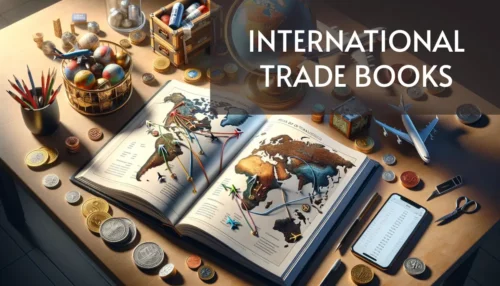
International Trade, also known as «World Trade» or «Foreign Trade», is defined as the mobility of both goods and services through the markets of different countries. This trade is carried out using foreign currencies and is regulated by additional norms, established by the markets participating in the negotiation and by the governments of their nations of origin.
During the execution of operations within the framework of International Trade, the countries involved benefit, since they can better position their products or services, while entering the markets of other nations. When internationalizing your company, the knowledge about Foreign Trade is mandatory, without the correct instruction it is not possible to be successful.
From its history and creation, through its regulations, the acronyms of World Trade, to the evolution of it using technology as a tool, are some of the topics that you can learn in depth by consulting the books of International Trade that we chose for you.
35) Inventory Books

The inventory consists of a detailed, ordered and valued list of all the assets, rights and debts of a company or person. It is used to check which are the elements that make up the estate of a company at a given time.
It allows companies to plan their activities and always maintain a minimum stock available for sale. In this way, it will be possible to meet customer demand. All this, without keeping the goods in stock for a long time, as it implies a cost.
The direct relationship between inventory and accounting is at the heart of commerce, so companies must always maintain tenacious control in their operations. Through inventory it is possible to know the current state of the company in order to make decisions that allow it to be administered and managed profitably.
36) Investment Books
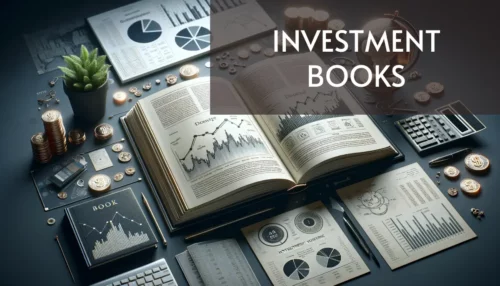
Investments are placements of capital in certain activities that can be commercial or civil, in order to achieve an economic return. Anyone who has some money can invest and seek with this, obtain greater long-term profits.
Every investment involves both risk and opportunity. It is a risk because the return of the money we invest is not guaranteed, and it is an opportunity because it can happen that the money invested is multiplied.
Knowing if an investment is better than another or others is something frankly difficult. In essence, it will depend on the preferences of each investor. Some will consider that a profitability of 50% is very good and others will settle for 10%.
37) Kaizen Books

The Kaizen method is a corporate management system that has the objective of implementing an orientation to the continuous improvement of the processes of its departments.
The Kaizen method aims to maximize production by constantly improving the business productive apparatus, reducing inefficiencies to increase the company’s competitiveness in the market. For this reason it has become a reference in marketing today.
For Kaizen to be effective, one more element must come into play: the 5S. The objective of the “five S” is to introduce both order and discipline in the workplace and contribute both to the elimination of waste within the production system, as well as to improve equipment maintenance tasks and reduce workplace accidents . It is a process of “continuous improvement that involves everyone”.
38) Logistics Books
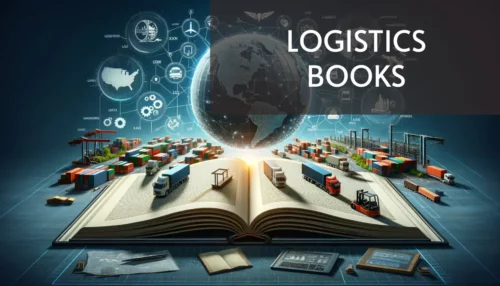
What we know as Logistics consists of all those operations that are executed with the idea of making a product arrive at the hands of the consumer, from the place where the raw material is obtained and passing through the production site.
These operations are mainly those related to transport, storage and distribution of products in the market. It is for all this that logistics is considered as an activity external to the manufacture of a product. But bear in mind that it is a key area in business and can be a determining factor in whether or not the marketing of a product is viable.
In summary, the purpose of Logistics is to satisfy the demands in optimal conditions of service, quality and cost.
39) Manufacturing Processes Books

The manufacturing processes can be understood as a series of necessary operations and processes that are carried out in a planned and successive manner to achieve the production of products. It is carried out by companies, which use information and technology that is used by people to manufacture products.
A manufacturing process requires a preliminary planning phase that will be complemented by production, marketing and distribution projections. On the other hand, the importance of the production process in the company is not only related to the creation or transformation process itself, but also to issues such as efficiency applied to the optimization of resources.
The manufacturing process or production chain, as it is also called, involves everything from the design and production of the product itself to its consumption by consumers.
40) Market Research Books

Market research is the process of identifying, collecting, analyzing and disseminating information for the purpose of improving marketing decision-making.
Market research is the basis for strategic development, to define the segmentation and positioning strategy, to identify the right prices, to refine the strategy and value proposition, to identify the best distribution channels, to know the competitors, their strengths and weaknesses.
Companies should continuously carry out market research processes, since this allows them to know how to respond to changes in tastes, preferences and market behavior in general. With it, a business decides to focus its efforts and resources. That is the value of market research.
41) Marketing Books
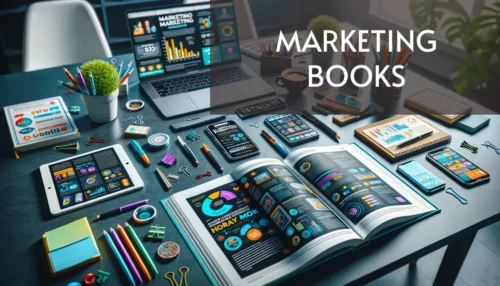
What is known today as Marketing is the conglomeration of processes and entities that allow the creation, communication and delivery of offers of exchange of services and goods, which have a value for customers, as well as for businesses and society.
In other words, marketing is an aspect of management that focuses on the communicative orientation of the economic and commercial actions of a group or an individual. That is, it focuses on how to identify and satisfy the needs of the target consumer market. Nowadays, whatever product you want to market, you must apply marketing techniques and guidelines in order to do it successfully.
«Marketing is the science and art of exploring, creating, and delivering value to satisfy the needs of a target market at a profit. Marketing identifies unfulfilled needs and desires. It defines, measures and quantifies the size of the identified market and the profit potential».
Philip Kotler
42) Negotiation Books

What is known as Negotiation is an interaction between two or more parties, which focuses on obtaining benefits. And believe me, this is a key piece of business and you must handle it perfectly if you want to succeed.
The objectives of a Negotiation can solve differences, obtain advantages for one of the parties, elaborate results that satisfy diverse interests, improve the current situation, solve problems or agree on a neutral point.
The basic principle of a Negotiation is to leave the parties involved partially satisfied. This shows that the process was executed in the right way, as neither party gets everything they want nor loses everything they have.
43) Networking Books
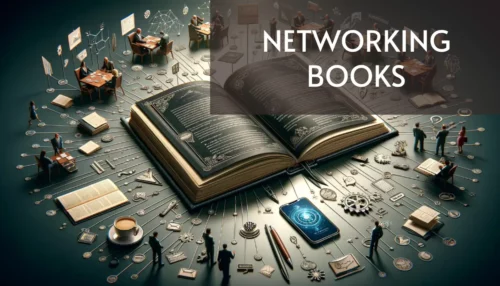
Networking is based on building a vast network of contacts between companies, entrepreneurs, and freelancers to strengthen their corporate image and generate new lines of communication and business.
Networking meetings can satisfy different work situations. People with a business idea need investors or partners, recruiters looking to incorporate specialists in certain areas, or business angels looking for investment projects.
There are different ways to generate networking moments, among them: congresses, courses, conferences, and professional social networks (such as LinkedIn). In these types of meetings, a time slot is always established to allow attendees to interact with each other, chat, get to know each other, and expose their common interests.
44) Organizational Designs Books
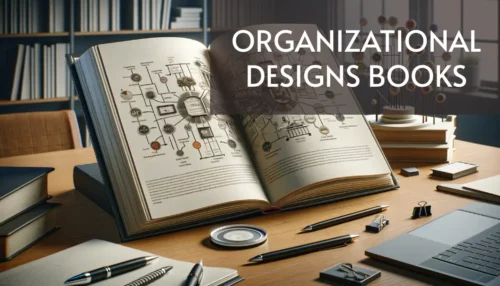
Organizational design is a step-by-step methodology that identifies dysfunctional aspects of procedures, structures and systems, realigning them to fit or adapt to current business objectives and realities. This will develop plans to implement new challenges.
There are three central elements to be defined and elaborated when designing or redesigning an institution, either in general or in part. Firstly, the most suitable organizational model must be defined; secondly, this model must be reflected in a chart called an organization chart; and finally, the preparation of organizational manuals must be considered.
Design is approached as an internal change under the guidance of an external facilitator. Managers and team members work together to define the needs of the organization and create systems to meet those needs more effectively. The facilitator ensures that the process is systematic and encourages creative thinking.
45) Organizational Development Books
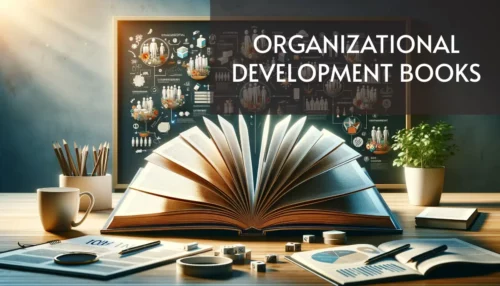
It is known as Organizational Development to the set of tools, methods and practices that seek to maintain a proper functioning of an organization. All this by means of dynamic processes and creating a favorable work environment. Usually, this topic is in charge of specialists in organizational psychology, human relations and related areas.
As your company grows, it is important that you acquire knowledge in this area since it will allow you to face the challenges that every company faces when it comes to growth.
The main objectives of Organizational Development are:
- Improve interpersonal competence.
- Minimize tensions.
- Implement more effective team management.
- Improve conflict resolution techniques.
- Establish organic rather than mechanical systems.
- Integrate people’s interests with those of the company.
- Establish more democratic and humane values.
- Decentralize and delegate.
46) Personal Branding Books

To increase your level of competitiveness in the workplace, we provide you with a selection of personal branding books.
With these texts, you will be able to understand the relevance of having a brand in the online environment, with the idea of being recognized and making a difference in every situation you participate in.
By reading the personal branding books we share with you, you will be able to increase your potential in the work field, by obtaining a positive presence and global visibility.
47) Project Management Books
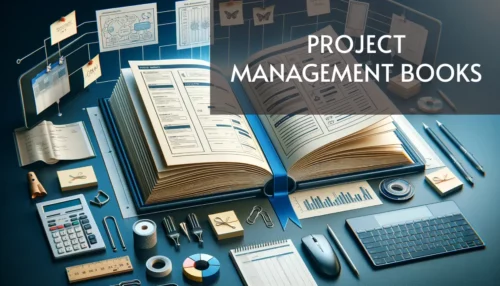
Project Management is a method of organizing and planning work to achieve the fundamental objectives of any organization. These objectives are productivity, efficiency, cost and time reduction, resource compensation, synergies, order, control, and constant evaluation of results, among many others.
Executing the work by implementing a correct Project Management, implies a considerable advantage if you want to improve the productivity of a company, as well as to obtain optimal working paths for the resources you have. The knowledge you obtain about business administration will allow you to make a rational and appropriate use of your company’s resources.
«Global trends such as competitiveness in organizations, technological changes and re-engineering increase the importance of Project Management processes. Project management is the discipline of successfully managing all necessary resources, which can and should be applied during the life cycle of any project» Dixon.
48) Public Relations Books

Public relations, understood as a management function, is a strategic communication process that builds mutually beneficial relationships between organizations and the public.
In this way, they are seen as a systematic, continuous and cyclical process, aimed at solving problems or opportunities in organizations and their environment through communication. Public relations serve to promote products, people, places, ideas, activities, organizations, and even nations.
Every business needs a good reputation to succeed and prosper. As it grows, it becomes increasingly important to excel in the field in which it operates. And although it depends on many factors, such as quality and reliability, public relations are one of the pillars for managing a company’s reputation. It allows you to communicate your brand and its related values in a comprehensive way and also to create narratives about your products and services.
49) Quality Control Books

Quality Control has been established as one of the vital processes in every production process. This is due to the fact that through this control the adequate execution of the processes is guaranteed, and it is certified that the production complies with what was planned.
Currently, this type of control is essential due to the characteristics of the current market, especially as far as competition is concerned. So much so that large organizations have experts, machinery and computer systems to validate what is produced in their factories. The quality of your product or service directly impacts the satisfaction of your customer, if you want satisfied customers you must implement a good quality control system.
Quality Control, although it is much more common in the production market, is also implemented in companies that provide services. In this case, surveys and questionnaires are used, among other mechanisms, to validate customer satisfaction regarding the service received.
50) Real Estate Books

Real estate refers to the land or delimited land and any structure built there such as apartments, houses, farms or even cottages. It also includes some other aspects found in the area such as natural resources like lakes, trees, gardens or animals.
Nowadays there is a big real estate business, the sale of houses, apartments, farms and so on is in a big boom, people want to own their own home more than ever so as a builder or real estate agency is a pretty lucrative business, but what about the common people, can it be a business for them?
The answer is yes, nowadays many people are buying houses or apartments to offer them as rent, this became an effective way to have a fixed salary without much effort and dedication.
51) Sales Books

The word sales has several definitions depending on the field in which it is applied. In general, we can say that sales is an exchange of goods or services for money. In the legal area, we speak of a transfer of the right to possess an asset, for money. In the accounting and finance sector, it is the total amount acquired for the provision of services or products.
Regardless of the case, sales are the core of any business. It is the essential action of any commercial operation. And if you want to set up a company, it is one of the areas you have to work on the most.
Some consider sales as a kind of art based on persuasion. For others, it is a science based on a methodological approach, in which certain steps must be followed to get the potential client to agree to acquire the service or product offered.
52) Six Sigma Books

Six sigma is a work philosophy that was born as a methodology for improvement and solution of complex problems. Its creator was Dr. Mikel Harry, who developed it as a tool to control and decrease the variation in processes. Since then, its concept has evolved through multiple contributions until it has become a philosophy put into practice in the highest performance processes.
The main purpose of the Six sigma is to achieve customer satisfaction, in that order it focuses on understanding their needs, collect information, and through statistical analysis find opportunities for improvement, a consistent improvement.
Perhaps one of the most relevant characteristics of Six sigma and that is strongly contrasted in practice, is that the quality is assured in the processes and not in the inspections. In that order, quality is generated and controlled in the processes; besides this, Six sigma has other principles.
53) Supply Chains Books
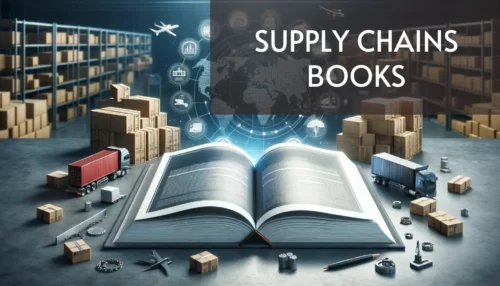
A supply chain is a set of elements that allow companies to have the necessary organization to carry out the development of a product or service and for it to meet the main objective, which is to satisfy the needs of the end customer.
The supply chain is also known as the value chain since the products acquire greater value ─value the redundancy─ as they progress through its links. The main phases that make up the supply chain are three: Procurement, Production, and Distribution.
Supply chain management corresponds to the “systematic and strategic management” of the traditional business functions and tactics used within a company among its different components, intending to improve the long-term performance, both individually and collectively, of the chain.
54) Trading Books

Trading consists of buying and selling listed assets with a lot of market liquidity. This financial market is electronic and regulated. Its objective is to obtain an economic benefit when the operation generates a capital gain.
It can be done with any asset that is traded on a financial market: company stocks, stock indices, commodities, currencies, cryptocurrencies. In all cases the concept is the same: knowing how to decide the best time to buy and sell.
The trader (investor or speculator who operates in the financial markets in order to obtain benefits) can be self-employed, using his own money, or employee, using the money of others. You can specialize in certain assets or markets and certain styles of trading: binary options trader, commodity trader, high frequency or scalper trader, Forex trader, oil trader, or day trader.
55) Training Books
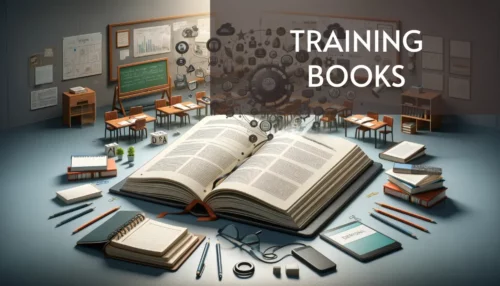
Training refers to a set of educational activities aimed at expanding knowledge, skills and abilities. It enables workers to perform better at work by adapting to the changing demands of the environment.
It is seen as a short-term educational process, employing specialized and planned techniques through which the company’s personnel will obtain the knowledge and skills necessary to increase their effectiveness in achieving the objectives planned by the organization for which they work.
The need for training arises when there is a difference between what a person should know to perform a task, and what he/she actually knows. These differences are usually discovered when doing performance evaluations or job profile descriptions.
56) Warehouse Books
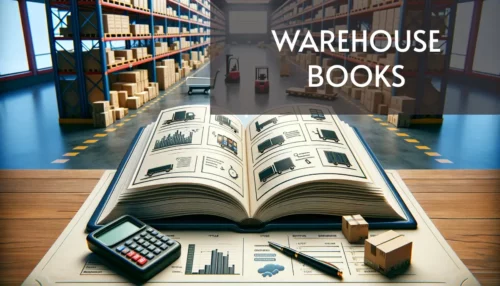
Today, a warehouse refers both to a place where things are stored and to a small business, also called an SME, where a wide variety of things are sold, especially household goods.
They are structured and planned to carry out storage functions such as preservation, control and dispatch of goods and products, reception, custody, etc. The warehouse is in charge of regulating the flow of stock.
Sometimes, the economic activity of a company may require one or more types of warehouses: for raw materials, semi-finished products, finished products, etc. All of them must be located according to the specific needs of their operation and following the constraints or possibilities of each location and its environment.
57) E-Commerce Books

Electronic commerce or e-commerce can be defined as the economic activity that allows the trade of products and services from digital media, such as websites, mobile applications and social networks. The relevance of this type of commerce is such that companies take it as part of the sales strategy thanks to its efficiency.
These are the main business models in e-commerce according to the agents involved B2B: Buying and selling between companies; B2C: Sale of goods and services from companies to consumers; C2B: Individuals selling their goods and services to companies; C2C: Buying and selling goods and services between consumers.
Among the advantages of e-commerce is the possibility of accessing products from all over the world, which do not even have to be displayed to the public in a physical store. This allows the seller to save costs.








































